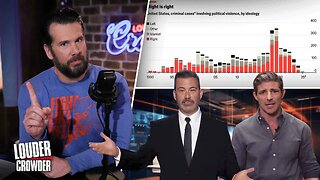Premium Only Content

How to Use Data Analytics to Improve Your Content Strategy
In today’s digital landscape, content is king, but not all content performs equally. As marketers and content creators, we face the ongoing challenge of crafting content that not only resonates with our audience but also drives meaningful engagement and results. This is where data analytics comes into play. By leveraging data-driven insights, you can refine your content strategy, enhance audience engagement, and ultimately achieve your business goals. This guide will delve into the ways you can harness data analytics to supercharge your content strategy, ensuring that every piece you create has a purpose and a plan.
Understanding Data Analytics in Content Strategy
Data analytics involves collecting, processing, and analyzing data to make informed decisions. When applied to content strategy, it provides insights into what works, what doesn’t, and what can be improved. This approach moves content creation from a guessing game to a science, enabling marketers to create content that is not only relevant but also effective.
Key Metrics to Track
To get started with data analytics, you need to identify which metrics are crucial for evaluating your content’s performance. Here are some key metrics to focus on:
Traffic Metrics: These include page views, unique visitors, and session duration. Monitoring these metrics helps you understand how many people are visiting your content and how long they stay.
Engagement Metrics: Metrics such as likes, shares, comments, and click-through rates (CTR) measure how well your content is resonating with your audience. High engagement indicates that your content is compelling and relevant.
Conversion Metrics: These metrics track actions taken by users after interacting with your content, such as form submissions, downloads, or purchases. Conversions are often the ultimate goal of any content strategy.
SEO Metrics: Keywords rankings, organic traffic, and backlink profiles fall under this category. SEO metrics help you understand how well your content performs in search engines and its visibility to potential readers.
Audience Demographics: Understanding the age, gender, location, and interests of your audience can help tailor your content to meet their specific needs and preferences.
Analyzing Content Performance
Once you’ve identified the key metrics, the next step is to analyze how your content performs based on these indicators. Here’s a structured approach to analyzing your content:
Collect Data: Use tools such as Google Analytics, social media insights, and SEO platforms to gather data on your content performance. These tools provide a wealth of information about how users interact with your content.
Identify Patterns and Trends: Look for trends in your data. Are there specific topics or formats that consistently perform well? Do certain types of content attract more engagement? Recognizing these patterns can help you understand what resonates with your audience.
Benchmark Against Competitors: Analyze your competitors’ content to see how it performs compared to yours. This can provide insights into industry standards and help you identify gaps or opportunities in your own content strategy.
Segment Your Data: Break down your data by different audience segments to see how various groups interact with your content. This can help you tailor your content more effectively to different segments of your audience.
A/B Testing: Test different content formats, headlines, images, or calls to action to see what works best. A/B testing allows you to make data-driven decisions about which elements of your content are most effective.
Refining Your Content Strategy Based on Data
Once you have analyzed your data, it’s time to refine your content strategy. Here’s how you can use your findings to make data-driven improvements:
Optimize Content Topics and Formats: Use insights from your data to identify the types of content that perform best. If certain topics or formats (such as infographics, videos, or blog posts) drive higher engagement, focus on creating more of that content.
Enhance SEO Efforts: Based on SEO metrics, refine your keyword strategy and optimize your content for search engines. Ensure that your content aligns with the keywords and phrases your target audience is searching for.
Personalize Content: Leverage audience demographics to create personalized content that speaks directly to your audience’s interests and needs. Personalization can significantly increase engagement and conversions.
Adjust Distribution Strategies: Analyze which channels (social media, email, etc.) drive the most traffic and engagement. Adjust your content distribution strategy to focus on the most effective channels.
Set Clear Goals and KPIs: Use your data to set specific, measurable goals for your content strategy. Define key performance indicators (KPIs) to track progress and ensure that your content efforts align with your overall business objectives.
Leveraging Advanced Analytics Tools
To gain deeper insights into your content performance, consider using advanced analytics tools. These tools offer more sophisticated features for tracking and analyzing content data:
Google Analytics: Provides detailed reports on traffic sources, user behavior, and conversion metrics. It’s a powerful tool for understanding how users interact with your content.
SEMrush: Offers insights into keyword rankings, backlink profiles, and competitive analysis. It’s useful for optimizing your SEO efforts and tracking your content’s search performance.
BuzzSumo: Helps you analyze which content performs best on social media and identifies key influencers in your industry. This tool is valuable for content ideation and understanding social engagement.
HubSpot: A comprehensive marketing platform that provides tools for content management, analytics, and automation. HubSpot helps you track content performance across different channels and optimize your strategy accordingly.
Hotjar: Offers heatmaps, session recordings, and user feedback tools. Hotjar helps you understand how users interact with your content on your website, providing insights into user behavior and engagement.
Implementing Data-Driven Strategies
Having established how to analyze and refine your content strategy, let’s explore actionable steps you can take to implement these data-driven insights effectively.
Content Creation and Ideation
Data-Driven Topics: Use insights from your analytics to guide your content topics. If your data shows that certain topics or themes generate higher engagement or drive more traffic, prioritize creating content around these areas. For instance, if your audience shows a strong interest in industry trends, consider writing in-depth articles or producing videos that cover emerging trends in your field.
Audience Preferences: Leverage data on audience demographics and behavior to tailor content to specific segments. Personalized content that aligns with the interests and needs of different audience groups can significantly enhance engagement. For example, if your analytics reveal that a particular demographic prefers visual content over text-heavy articles, you might focus on creating more infographics or video content for that group.
Content Formats: Based on performance metrics, experiment with different content formats. If blog posts consistently outperform other formats, consider investing more time in writing and promoting high-quality articles. Conversely, if videos receive more engagement, allocate resources to producing engaging video content.
Content Distribution
Optimize Channels: Use data to determine which channels are most effective for distributing your content. For instance, if social media platforms like LinkedIn or Twitter drive the most traffic and engagement, prioritize these channels in your distribution strategy. Tailor your content to fit the preferences and behaviors of users on each platform.
Timing and Frequency: Analytics can also reveal the optimal times and frequency for posting content. By analyzing traffic patterns and engagement rates, you can schedule your content to reach your audience when they are most active. This approach maximizes visibility and increases the likelihood of engagement.
Email Marketing: If your data shows that email newsletters drive high engagement, consider segmenting your email list and personalizing your content to different subscriber groups. Use A/B testing to determine which subject lines, content types, and sending times yield the best results.
Performance Tracking and Optimization
Continuous Monitoring: Regularly monitor your content performance using analytics tools. Set up dashboards and reports to track key metrics and KPIs in real-time. This ongoing monitoring allows you to quickly identify any issues and make adjustments as needed.
Iterative Improvements: Use insights from performance data to make iterative improvements to your content strategy. For example, if certain headlines or calls to action consistently underperform, revise them based on data-driven recommendations. Implementing small changes can lead to significant improvements in overall performance.
Feedback Loops: Incorporate feedback from your audience into your content strategy. Use surveys, comments, and social media interactions to gather qualitative data on how your content is perceived. Combine this feedback with quantitative data from analytics to make informed adjustments to your strategy.
Case Study: Real-World Application
To illustrate the power of data analytics in refining a content strategy, let’s look at a hypothetical case study. Imagine a digital marketing agency that specializes in content creation for various clients. Initially, their content strategy involved a broad approach with no clear focus or data-driven direction.
Upon implementing data analytics, the agency began tracking metrics such as engagement rates, traffic sources, and conversion rates for each piece of content. They discovered that blog posts about SEO best practices received significantly more engagement and conversions compared to other topics.
Armed with this insight, the agency decided to focus their content strategy on SEO-related topics. They optimized their blog posts for search engines, created in-depth guides, and shared industry updates. Additionally, they adjusted their content distribution strategy to prioritize channels where their audience was most active, such as LinkedIn and industry forums.
The results were striking. The agency saw a notable increase in organic traffic, higher engagement rates, and improved conversion rates. By continually analyzing performance data and making data-driven decisions, they were able to refine their strategy and achieve greater success for their clients.
Future Trends in Data-Driven Content Strategy
As technology and data analytics tools evolve, new trends and innovations are shaping the future of content strategy. Here are a few emerging trends to keep an eye on:
AI and Machine Learning: Artificial intelligence (AI) and machine learning are increasingly being used to analyze large datasets and provide predictive insights. These technologies can help identify emerging trends, personalize content at scale, and optimize content performance in real-time.
Predictive Analytics: Predictive analytics uses historical data to forecast future outcomes. By leveraging predictive analytics, you can anticipate audience behavior, optimize content strategies, and stay ahead of industry trends.
Advanced Personalization: With advancements in data analytics, content personalization is becoming more sophisticated. AI-driven algorithms can analyze user behavior in real-time and deliver highly personalized content recommendations, improving engagement and conversion rates.
Read the full blog post here https://www.gerardyadgg.com/2024/09/how-to-use-data-analytics-to-improve.html
-
 LIVE
LIVE
The Charlie Kirk Show
1 hour agoGlenn Beck Commemorates Charlie Kirk | 9.17.2025
28,760 watching -
 LIVE
LIVE
The White House
1 hour agoVice President JD Vance Delivers Remarks on President Trump’s Tax Cuts
613 watching -
 LIVE
LIVE
Dr Disrespect
2 hours ago🔴LIVE - DR DISRESPECT - ARENA BREAKOUT: INFINITE - ESCAPE OR LOSE EVERYTHING!
1,508 watching -
 LIVE
LIVE
Sean Unpaved
1 hour agoKawhi's Payday Peril, MLB's October Odyssey, & Raleigh's Switch-Hit Throne
163 watching -
 1:39:16
1:39:16
Steven Crowder
4 hours agoJimmy Kimmel & The Left Desperately Want to Gaslight America - Don't Let Them
400K322 -
 LIVE
LIVE
The Shannon Joy Show
3 hours agoFinal Betrayal: Trump’s FBI Director Kash Patel Declares Jeffrey Epstein WASN’T A Sex Trafficker.
483 watching -

The Mel K Show
2 hours agoMORNINGS WITH MEL K - Who Benefits? Order Out of Chaos & the Hegelian Dialectic 9-17-25
22.5K6 -
 24:23
24:23
Standpoint with Gabe Groisman
1 hour agoUS DOJ's Leo Terrell Says “No University Is Prepared For The Crackdown That’s Coming…”
5.35K -
 59:28
59:28
Grant Stinchfield
2 hours ago $1.33 earnedBombshell Audio Proves FBI Targeted Navarro for One Reason—Politics
22.1K5 -
 LIVE
LIVE
LFA TV
7 hours agoLFA TV ALL DAY STREAM - WEDNESDAY 9/17/25
3,679 watching